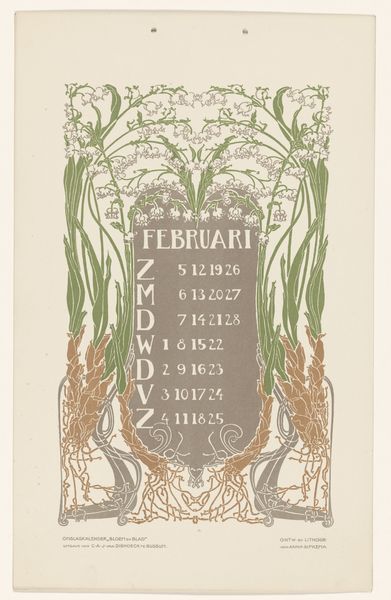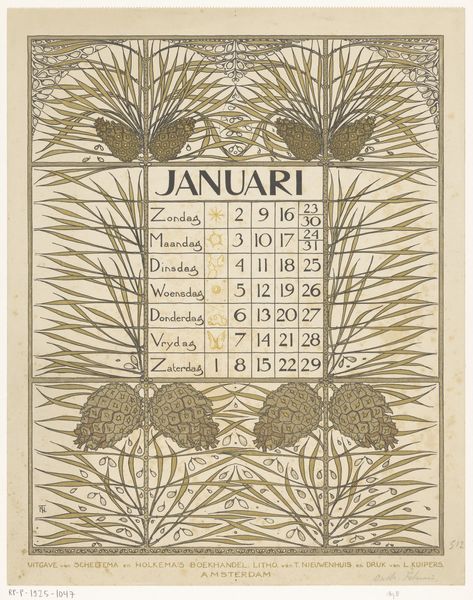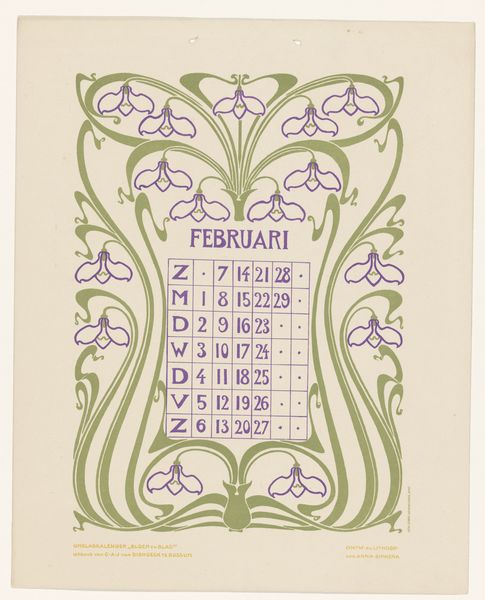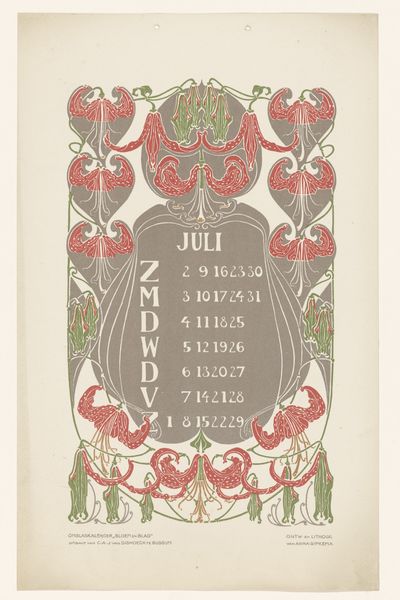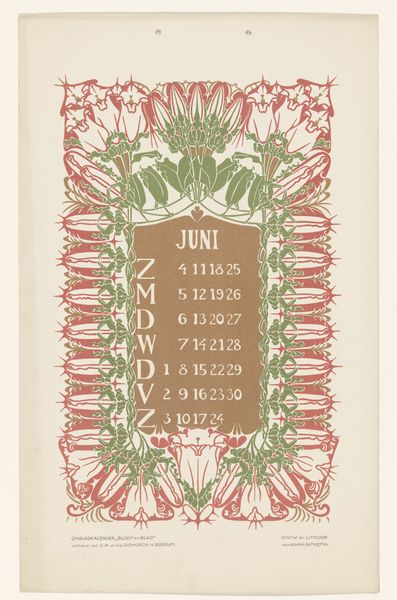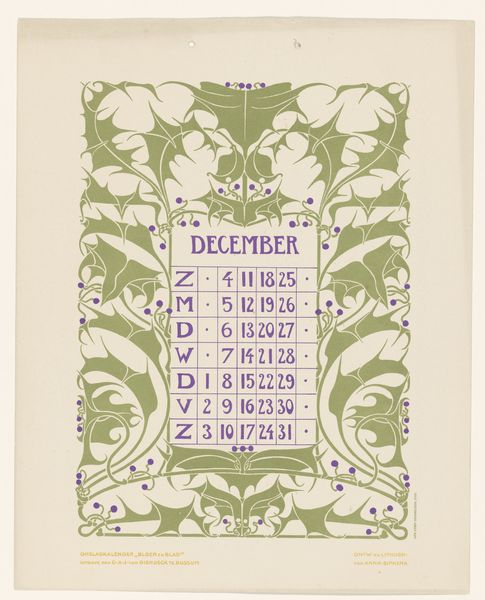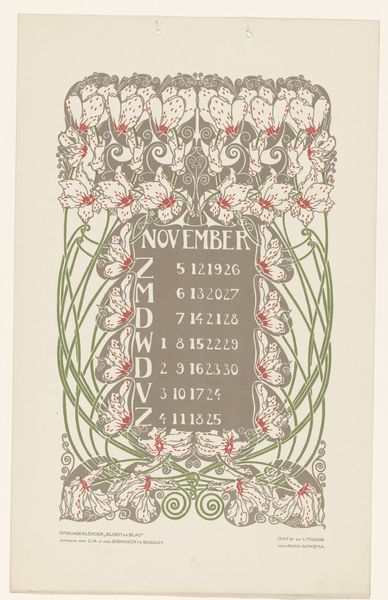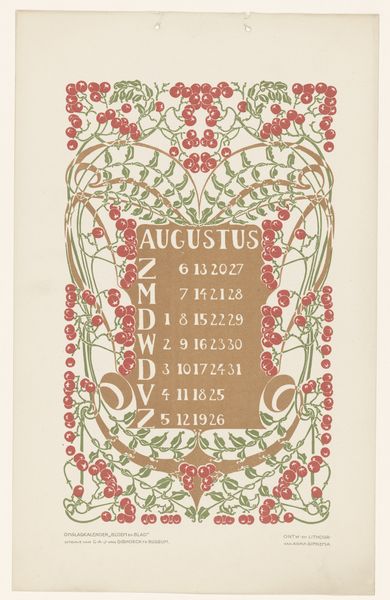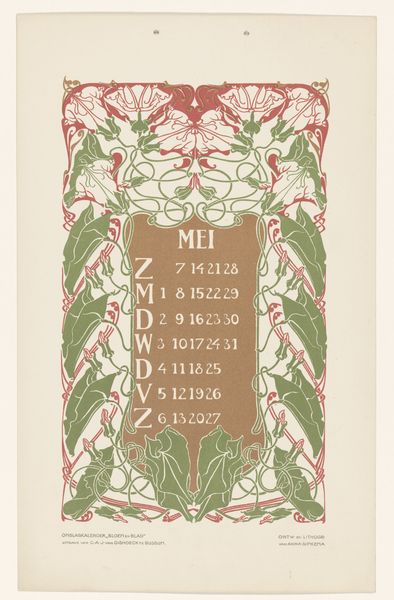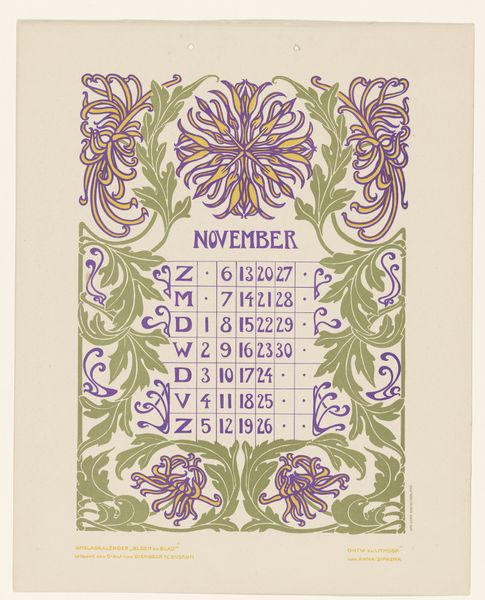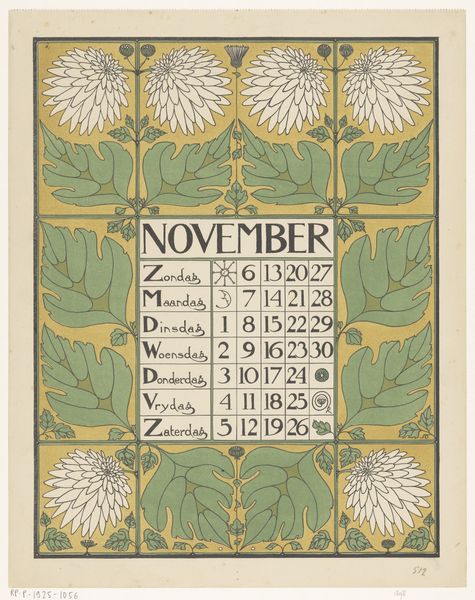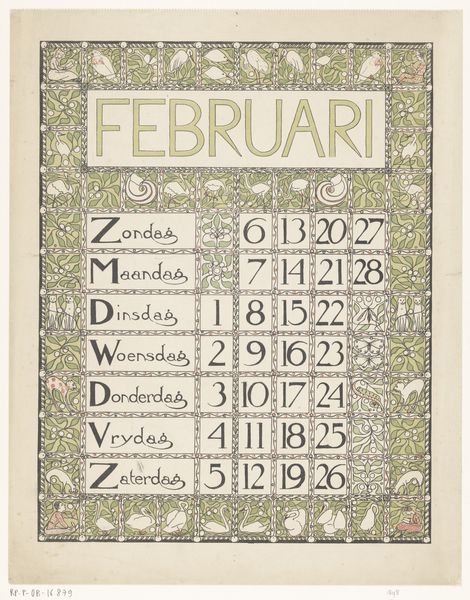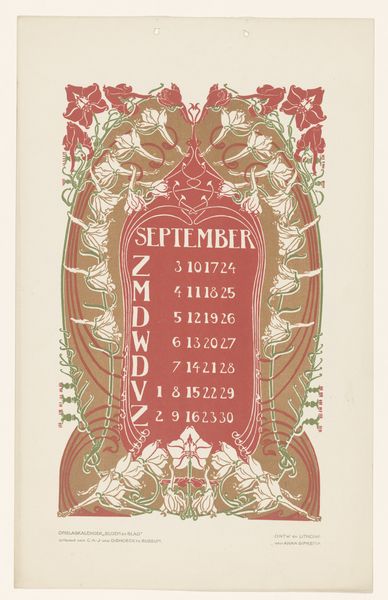
graphic-art, print
#
graphic-art
#
natural stone pattern
#
naturalistic pattern
#
organic
#
art-nouveau
# print
#
pattern
#
old engraving style
#
retro 'vintage design
#
wood background
#
pattern background
#
organic pattern
#
pattern repetition
#
textile design
#
decorative-art
#
layered pattern
Dimensions: height 369 mm, width 231 mm
Copyright: Rijks Museum: Open Domain
Editor: This is a calendar page for January with pine cones, made before 1905 by Anna Sipkema, using a printmaking technique. The patterns and earthy tones give it a cozy feel. What catches your eye when you look at this work? Curator: For me, it’s how this piece embodies the ideals of the Arts and Crafts movement. Look at the meticulousness of the printmaking, designed for mass consumption yet celebrating handcrafted quality. Sipkema elevates the humble calendar into a work of art. The repetition of the pine cone motif, initially appearing decorative, actually highlights a mass production process intended for functional domestic objects. What does that contrast suggest to you about societal values at the time? Editor: It feels like it blurs the lines between art and utility, doesn't it? Something that's both beautiful and practical. The design seems almost too intricate for something meant to be thrown away at the end of the month. Curator: Exactly! The “Kalenderblad januari met dennenappels” reflects a social desire to imbue everyday objects with artistic merit. This raises questions about labor; it implies the designer had to work within production parameters. I see also an exploration of class, perhaps offering accessible aesthetics through affordable design to promote art among a wide audience. Are we perhaps, then, consuming and engaging with the value placed upon hand labor and craft, or is it mere visual appropriation? Editor: That makes me appreciate it even more, seeing the connections between the process, the purpose, and the wider culture. Curator: Indeed! Considering the materiality alongside the social function reframes how we think about this image: less as decoration, more as a testament to the intertwined values of industry and art.
Comments
No comments
Be the first to comment and join the conversation on the ultimate creative platform.
